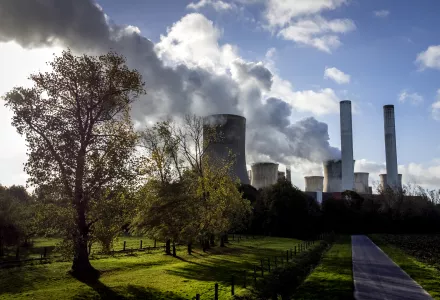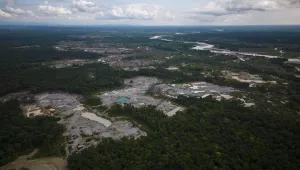
Direct air capture (DAC) is a type of technology that captures carbon dioxide directly from the air. The captured carbon can either be permanently sequestered in the ground – thus achieving carbon dioxide removal (CDR) – or reused in several beneficial applications. Along with other carbon management technologies, DAC is often discussed in the context of decarbonization and the green energy transition. As the negative impacts of climate change become ever more apparent, governments and private industries have funneled increasing support toward DAC as a critical pathway toward achieving a net-zero future. The market for DAC has also expanded, with many emerging companies developing and commercializing innovative approaches to DAC technology.
Although a promising technology, wide-scale deployment of DAC faces several significant challenges. Resource limitations – including DAC’s high energy requirements – and the high economic costs of developing DAC systems are ongoing constraints. While gaining prominence, DAC is still in its infancy, with few operating plants worldwide. DAC is also significantly more expensive than other commercially available carbon dioxide removal models, and some in the scientific community doubt that we could bring down the resource and material costs of DAC enough to make it a viable negative emissions technology. Furthermore, the DAC process itself comes with its own carbon costs, not to mention the reuse applications of the captured carbon, which on the whole might potentially outweigh the positive environmental benefits of the technology.
Public purpose considerations for DAC include ensuring that the technology actually yields net carbon removal over its full life cycle; protecting the political rights of local communities situated around DAC facilities; balancing investments in DAC infrastructure and green energy with consumer welfare; and making sure that the jobs generated by DAC are equitably distributed. Policymakers have so far focused most of their attention on funding Research and Development (R&D) in DAC and other carbon capture technologies, but effectively and responsibly scaling up DAC will require further developing and enforcing the regulatory framework around these and related technologies.
Wu, Jamie, Chuck Meire, Ariel Higuchi and Amritha Jayanti. “Technology Primer: Direct Air Capture.” Edited by Herzog, Howard and Peter Psarras. Belfer Center for Science and International Affairs, Harvard Kennedy School, June 9, 2023









